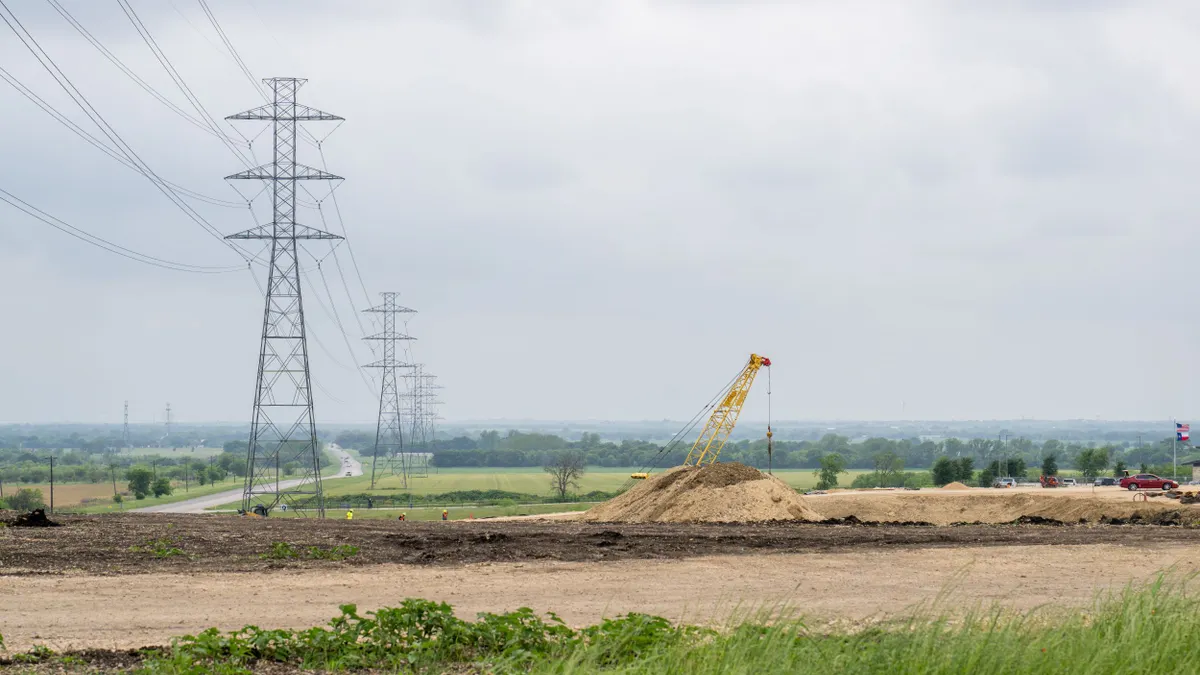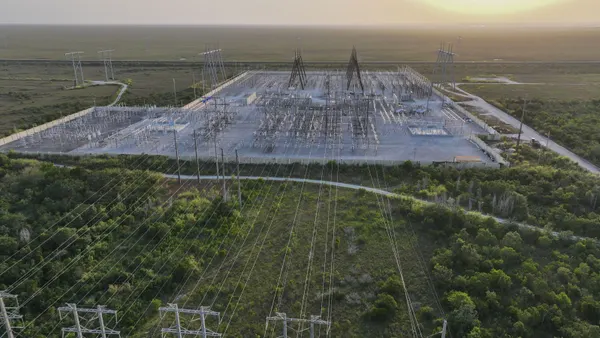Dive Brief:
- The U.S. Department of Energy’s efforts to prevent large fossil-fuel power plants from retiring could cost ratepayers about $3.1 billion a year in 2028, according to a report released Thursday by Earthjustice, the Environmental Defense Fund, the Natural Resources Defense Council and the Sierra Club.
-
Grid Strategies used the cost of a dozen recent reliability-must-run contracts from around the U.S. — $89,315/MW-year — as a proxy for the estimated cost of keeping fossil plants open due to a DOE mandate. The states with the highest potential annual costs by 2029 for keeping power plants from retiring are California at $389 million; Texas, $183 million; Colorado, $178 million; Michigan, $171 million; Louisiana, $164 million; and Illinois, $161 million, it said.
- “This report confirms that the Department of Energy’s unlawful mandates amount to a self-inflicted rate hike in nearly every region of the country,” Ted Kelly, director and lead counsel for U.S. Clean Energy at EDF, said in a press release. “These dirty and expensive fossil plants were slated to close for good reason: they cannot compete with cleaner sources of energy that are more affordable and better for our health.”
Dive Insight:
On the first day of his second term, President Donald Trump declared an energy emergency in the United States — a claim that states and others have challenged in court.
In April, Trump issued another executive order directing DOE to expedite its process for mandating that retiring power plants continue to operate to address emergencies, a power it is asserting under section 202(c) of the Federal Power Act.
So far, DOE has issued 90-day emergency orders directing Consumers Energy and Constellation Energy to continue running generating units in Michigan and Pennsylvania past their planned retirements. DOE said the units are needed to avoid blackouts.
Consumers Energy, the majority owner of the 1,560-MW, coal-fired J.H. Campbell power plant in Michigan that was ordered to remain online past its May 31 retirement date, reported to the Securities and Exchange Commission last month that it spent $29 million in the first 38 days of a DOE order to keep the plant online.
Based on that filing, Grid Strategies estimated the cost to keep it running at about $279 million a year. In June, Michigan’s attorney general filed a challenge to DOE’s order affecting the J.H. Campbell plant, saying the “emergency determination cannot bear even the mildest scrutiny.”
“The scheduled retirement of J.H. Campbell was the culmination of a carefully planned process that unfolded over four years,” Michigan’s complaint reads. Under the oversight of state regulators, Consumers Energy “executed a plan to retire an old and inefficient facility, J.H. Campbell, and replace it largely with newer resources that would both increase Consumers’ available generation capacity and save its ratepayers money.”
It noted that the Midcontinent Independent System Operator carefully studied the plant’s proposed retirement and determined that the facility could retire without causing reliability issues.
There are indications that DOE has talked with the owners of many other retiring power plants about potentially mandating their retention, Grid Strategies said in the report.
“Power plants have been slated to retire because their owners and state regulators have determined they are no longer economic or needed,” Grid Strategies said in the report. “DOE mandates override those well-informed decisions, inflating electric bills for homeowners and businesses and undermining the competitiveness of U.S. factories and data centers.”
Not counting generating units that may be replaced with new fossil-fueled units, about 34.9 GW of capacity is set to retire before 2029, Grid Strategies said, citing U.S. Energy Information Administration data.
If additional power plant owners try to accelerate planned retirement dates to take advantage of ratepayer subsidies available to plants facing these mandates, the bill to ratepayers could increase to $5.9 billion a year, the Grid Strategies analysis found. For this high-end cost estimate, it included an additional 31.4 GW of capacity that is at least 60 years old.
MISO could face $1.1 billion in annual costs by the end of 2028 to keep 12,110 MW online, according to Grid Strategies. The PJM Interconnection could be hit with $732 million in costs to keep about 8,190 MW from retiring, and the California Independent System Operator faces $389 million to prevent 4,360 MW from shuttering in the same period, according to the analysis.
The report is “out of touch with reality,” according to Ben Dietderich, DOE press secretary.
“For years, American grid operators have warned decommissioning baseload power sources would jeopardize the reliability of our electric grid,” he said in an email. “You can read their reports or the recently released DOE grid reliability report which explains that existing generation retirements and delays in adding new firm capacity, driven by the radical agenda of past administrations, will lead to a surge in power outages.”
DOE’s emergency authorizations have been essential in keeping the lights on and air conditioning running during the peak capacity events of this summer, Dietderich said.
Editor’s note: This story was updated to include comment from DOE.















